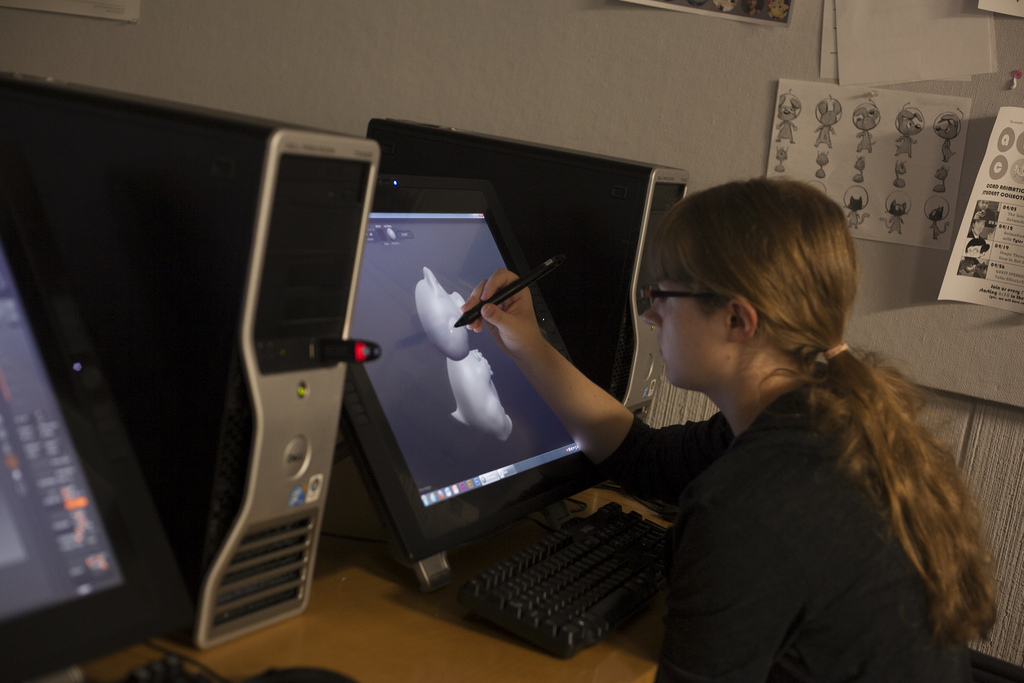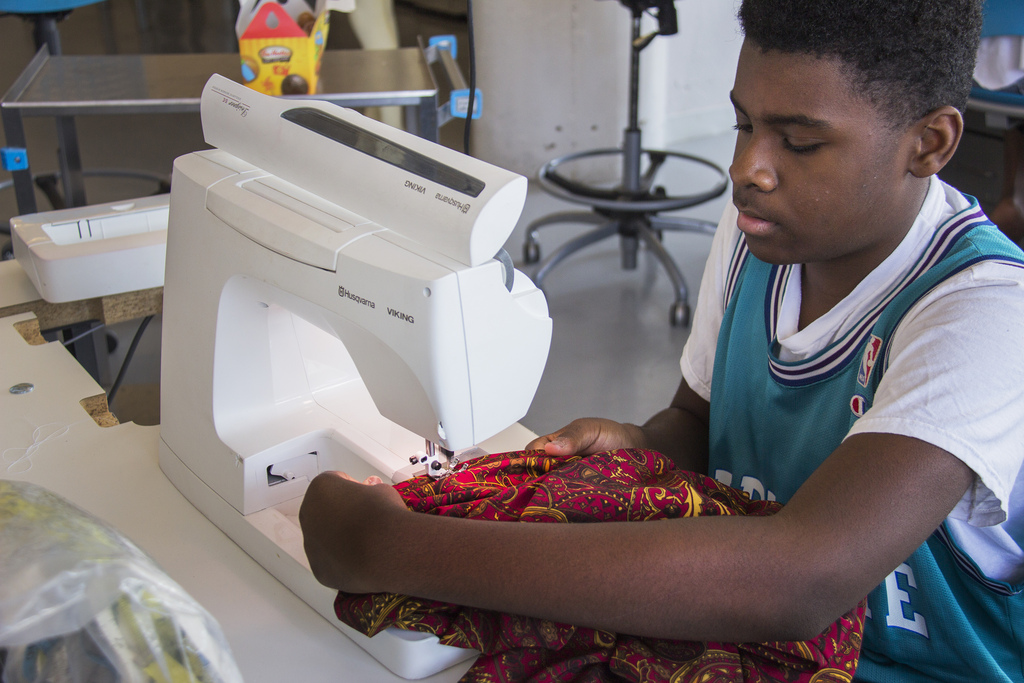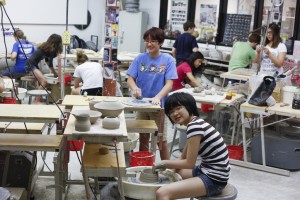Sign up for my FREE parent tips email and get my FREE Ebook on college financing! Or subscribe to my blog via email on the left.
 Perhaps your son or daughter has always been good with a brush and a pen or with video art, and now as a high school junior or senior they’re talking about majoring in an art or design field. That means they need to compile samples of their work into an art or design portfolio.
Perhaps your son or daughter has always been good with a brush and a pen or with video art, and now as a high school junior or senior they’re talking about majoring in an art or design field. That means they need to compile samples of their work into an art or design portfolio.
A portfolio is required for admission to many art and design programs and for consideration in nearly all scholarship programs. It should be thoughtfully put together and include pieces that represent your child’s overall artistic strengths and interests. So, you can’t just mail a few favorite pieces. The portfolio tells the admissions counselors about who your child is and what sets your child apart from other candidates.
If a college application deadline is looming and neither you nor your child has even thought about a portfolio, don’t feel bad. You’re not alone. Here are five things to remember as your student compiles their portfolio.
- Find 10 to 20 pieces that highlight all-around abilities and work as a group. Include a variety of pieces that show your child’s personality and willingness to dedicate time to a project. All pieces must be original ideas, not “borrowed” or copied from others’ works. For example, consider including a sketchbook that demonstrates creative thinking. Be sure to include specific school requirements, or your portfolio will be tossed out.
- Make sure the works make sense as a group and are arranged well.
 When deciding which pieces to include, look at your work as a group: What can each contribute to the portfolio? What does each communicate to the reviewer? Does the piece showcase a skill-set? Order also is important. The first piece in the portfolio should make a strong statement and set the tone for the rest of the presentation. The following pieces should show ability, with the most expressive works placed in the middle.
When deciding which pieces to include, look at your work as a group: What can each contribute to the portfolio? What does each communicate to the reviewer? Does the piece showcase a skill-set? Order also is important. The first piece in the portfolio should make a strong statement and set the tone for the rest of the presentation. The following pieces should show ability, with the most expressive works placed in the middle. - Ensure that all portfolio items are professionally presented. Once the pieces have been selected and arranged, make sure everything is labeled properly and easy to read (toss out those Post It Notes!). For example, to best present 3-D pieces, photograph them against a backdrop for a professional presentation. Remember, admissions offices will be reviewing thousands of applications, so you want your child’s to stand out (not because it’s sloppy, but because it’s well thought out and put together).

- Ask for help and be open to the advice.The portfolio should only include your child’sbest work, yet it’s tough to critique a loved ones work. Ask teachers, colleagues and friends for their opinion on the portfolio before it’s submitted. Also, most colleges encourage in-person preliminary portfolio reviews during junior and senior year. Take a few samples to the visit, and college admission staff will guide your child on pieces that are worth editing and further developing for their portfolio. Fortunately, plenty of resources exist for students to create a portfolio that will boost confidence in current skills and pave the way to a life in art and design.
- Follow submission guidelines and never miss a deadline. Read and re-read the submission guidelines to make sure proper steps are taken to prepare and submit the portfolio. For example, the college may have specific digital submission requirements if you submit your portfolio electronically. And, be aware of all deadlines for submission. Even if you’re in a time crunch, staying up late to ensure the pieces selected represent your child’s work is arranged well, and professionally presented may mean the difference between the application being accepted or rejected.
_____________
Today’s guest blogger, Densil R. R. Porteous II is the Director of Admissions for CCAD. Prior to joining CCAD he was an assistant dean of admission for marketing and outreach at Sanford University and an associate dean/director of college counseling at the Drew School in San Francisco. He is a graduate of Kenyon College. Densil can be reached at Dporteous@ccad.edu. CCAD is one of the oldest and largest private art and design colleges offering bachelor’s and master’s degrees in Fine Arts in the United States. www.ccad.edu

One thought on “How to Prepare an Art or Design Portfolio: Top 5 Tips”
Comments are closed.